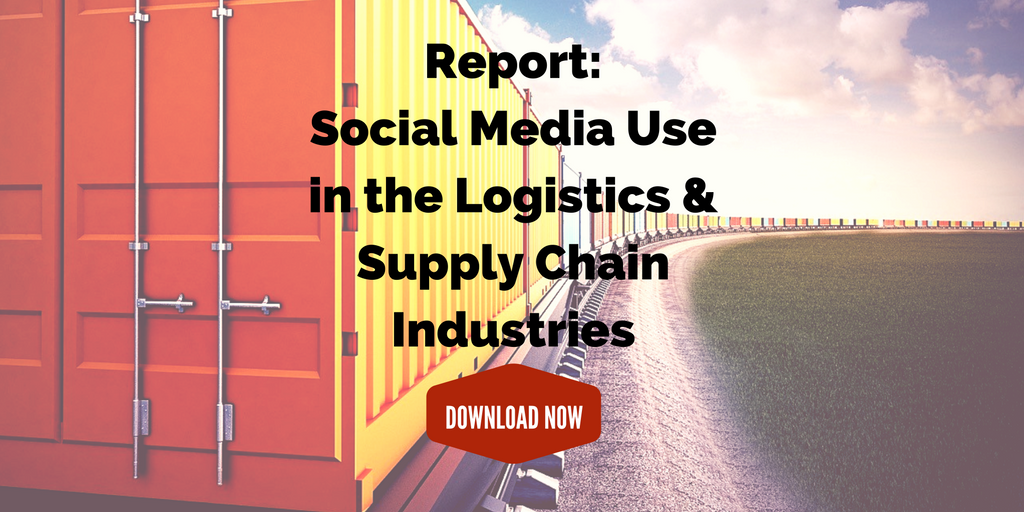
by Fronetics | Oct 15, 2019 | Blog, Content Marketing, Manufacturing & Distribution, Marketing, Supply Chain
The analog supply chain model is outmoded and inefficient. Here’s how digital transformation is reinventing manufacturing.
Highlights:
- Manufacturers are increasingly adopting artificial intelligence and machine learning technologies.
- The traditional analog supply chain model is unable to compete with digital disruptors in a volatile market.
- Digital transformation empowers manufacturers to create sought-after personalized experiences for buyers.
Digital transformation isn’t just the latest buzzword in supply chain circles. It’s an ongoing trend that’s revolutionizing manufacturing and supply chain efficiency. According to a recent report from Accenture, 78% of CFOs are spearheading initiatives to improve efficiency through adoption of digital technology.
Digital transformation empowers manufacturers to meet the evolving demands of a customer base with rising expectations for customer service. The digital technologies that are emerging today offer analytics that are vital for forecasting and understanding how to shift the balance of supply and demand.
3 ways that the analog supply chain model is outdated
Supply chain management expert Frank Meerkamp writes, “The traditional supply chain is a tapestry built on an outdated analog network – yet it exists in a digital world.” The difficult truth is that in today’s climate of rapidly shifting market demands and an increasingly interconnected world, manufacturers must embrace digital transformation or be left behind.
Before we look at how digital transformation can benefit manufacturers, let’s take a moment to examine the challenges presented by an outdated analog supply chain.
1) Market volatility
Today’s markets move at a breakneck pace. Thanks to a constantly shifting geopolitical landscape, changing regulations and sanctions, and the unpredictability of cost and supply, manufacturers face market volatility, uncertainty, and a high level of risk. The analog supply chain model leaves companies without the agility to respond and pivot quickly and to operate efficiently on a global or regional scale.
2) Competition from digital disruptors
Perhaps the most powerful example of the way in which digital disruptors are challenging legacy leaders is the Amazon effect. Amazon has effectively situated itself as an innovator and easily has outpaced rivals in multiple sectors. Companies that continue to embrace an analog supply chain model simply cannot compete with those that have fully embraced digital transformation.
3) Rising customer expectations
While it can be tempting for B2B companies to bury their heads in the sand, believing that digital marketing is purely a B2C necessity, the reality is that supply chain companies must embrace digital marketing as part of their digital transformation. Buyers expect hyper-personalized experiences, as well as customized products, and the kind of execution that’s impossible for manufactures to deliver within the analog supply chain framework.
4 ways digital transformation addresses today’s challenges for manufacturers
As the complexity of the supply chain increases, embracing digital transformation is the clearest path to success for manufacturers. While companies that cling to an outdated analogue model struggle with eroding margins and an inability to compete, those that establish “a data-driven supply chain,” writes Meerkamp, “can gain advantages in increased forecasting accuracy, identifying and resolving issues in real time, creating new segmentations, and delivering on consumer requirements with speed, specificity, and scale.”
In short, digital transformation uses data to drive visibility and agility for manufacturers, allowing them to operate efficiently and profitably.
1) Establishing visibility and centralized control
The AI and machine-learning technologies available today enable manufacturers to meet the challenges presented by an increasingly complex supply chain. Massive sets of data can be captured and processed, providing invaluable real-time visibility. Not only that, but manufacturers can leverage this visibility to centralize data and decision-making.
2) Creating new performance engines
Thanks to the ability of AI technologies to process enormous quantities of data, digital transformation enables “powerful resolution engines, based on real-time root-cause analyses, to automate the execution of supply chain functions, and optimize transactions to meet strategic objectives,” says Meerkamp. These technologies facilitate the forecasting and immediate decision-making necessary for manufacturers to operate efficiently.
3) Facilitating agility
Today’s marketplace moves faster than ever, and market forces are constantly shifting. Agility has never been more important for companies to compete. Intelligent technologies allow supply chain companies to establish a management model that is collaborative, data-driven, and platform-based. Digital transformation enables the sharing of qualitative information as well as real-time data and implications. This in turns enables agile management, ready to meet the shifting demands of the marketplace.
4) Developing personalization and flexibility
One of the biggest challenges manufacturers face today is the increasing buyer expectations of personalized experiences. AI technology enables the creation of segmentation strategies, addressing buyers’ personalized needs based on various factors, including channel, location, and service level. Real-time visibility into market data also leads to greater insight into buyers’ needs and how to meet them.
Organizations that embrace digital transformation are empowered to create personalized experiences for their customers and operate with the agility, visibility, and centralization necessary to compete in today’s marketplace.
Related posts:


by Fronetics | Apr 18, 2019 | Blog, Current Events, Manufacturing & Distribution, Robotics & Automation, Supply Chain
A McKinsey & Company report studied the impact of automation in manufacturing driven by rapid advances in robotics, AI, and machine learning.
Highlights:
- New robotics technologies are cheaper, faster, and smarter than before.
- 87% of hours workers spend in production could be automated with existing technologies.
- Learn what four factors to consider when making decisions about automation.
Since the industrial revolution, automation has been a major disruptor in manufacturing. Once again, a new generation of robotics and related technologies is reshaping the face of the manufacturing and distribution industries. In fact, American manufacturing has made a recent comeback, thanks in large part to the widespread use of automation and robotics.
Automation technologies that were once cost-prohibitive are now more achievable — and the return on investment is greater than ever before. The new generation of robots are not only far less expensive than their ancestors, but they are also more versatile, flexible, and able to learn new tasks, even those that were far too difficult for machines just a few short years ago.
[bctt tweet=”The new generation of robots are not only far less expensive than their ancestors, but they are also more versatile, flexible, and able to learn new tasks, even those that were far too difficult for machines just a few short years ago.” username=”Fronetics”]
Robots are now capable of, for example, “picking and packing irregularly spaced objects, and resolving wiring conflicts in large-scale projects in, for example, the aerospace industry,” according to a recent report from McKinsey & Company. Not only that, artificial intelligence is leveling the playing field between human and machine, and “increasing the potential for automating work activities in many industries. In one recent test, for example, computers were able to read lips far more accurately than professionals.”
Quantifying the impact of automation on manufacturing
McKinsey’s study, which covered 46 countries and about 80% of the global workforce, determined that a tremendous amount of working hours could be eliminated or repurposed by automation with technology that is already here.
The study found that “87% of the hours spent on activities performed by workers in production occupations are automatable — the most of any manufacturing occupation.”
And it doesn’t stop there. “Even among other occupations in manufacturing (for example, engineering, maintenance, materials movement, management, and administration), however, there is still significant opportunity, with approximately 45 percent of these working hours automatable as well.”
The cost and logistics of automating
In general, the study found that automation allowed wages to increase globally and profits to grow. The authors emphasize the fact that in order to capture long-term value from automation, manufacturers’ best bet is to implement technologies in phases, capturing value at each phase, allowing for future investment.
Many complex factors come into play when it comes to meeting the challenges associated with automation, deciding what to automate, and when to implement technologies to best capture long-term value. Cost is just one element, albeit an important one.
McKinsey suggests considering the following four factors when making decisions about what to automate:
- Technical feasibility
- Cost associated with developing and deploying necessary hardware and software
- Cost of labor and resultant “supply-and-demand dynamics”
- Benefits beyond labor substitution, such as increased output and quality, and fewer errors
An American manufacturing renaissance
The Association for Advancing Automation has predicted that “American manufacturing’s embrace of robotics will ensure a new manufacturing renaissance in this country.” Already, we’re seeing a steady trickle of companies reversing outsourcing trends, as it’s becoming profitable again for manufacturing to take place in the United States, rather than relying on cheap labor abroad.
As more operations embrace automation — and as we continue to witness rapid advances in robotics, AI, and machine learning — American manufacturers won’t be the only ones to reap the benefits. Many experts are predicting that automation in manufacturing will create new, better paying jobs.
Optimists include our own CEO Frank Cavallaro, who recently wrote: “From what I see now … I still feel optimistic that AI and automation will create leaner, more efficient operations that will, in turn, create new (even if different) jobs. To me, it still looks like the ones winning from the increasing technological advances in the manufacturing industry are, in fact, we humans.”
Related posts:


by Elizabeth Hines | Mar 20, 2019 | Blog, Logistics, Robotics & Automation, Supply Chain
With the power to drastically increase efficiency in all areas of the supply chain, it’s important brands are exploring the benefits of AI. Here are four examples of how AI can benefit your supply chain.
Highlights:
- It’s estimated that supply chain firms could gain $1.3 to $2 trillion a year from using AI.
- Machine learning has the ability to quickly discover patterns in supply chain data by relying on algorithms and constraint-based modeling to find the most influential factors.
- The increasing popularity of chatbots is making it harder to ignore how AI is helping shape not just the daily logistics but also the B2B marketing landscape and operational procurement for supply chain industries.
Artificial intelligence is not simply affecting supply chain management, it is revolutionizing it.
With the power to drastically increase efficiency in all areas of the supply chain, McKinsey estimates that firms could gain $1.3 trillion to $2 trillion a year from using AI in supply chain and manufacturing.
Here are 4 examples of AI and how it’s changing supply chain management for the better.
1. Autonomous transport
There’s nothing more exciting than the field of autonomous transport for SCM. We’ve all known for many years that driverless trucks have major potential to affect supply chain management and logisitics.
We aren’t there yet – and “anyone employed as a driver today will be able to retire as a driver” — but if autonomous trucking can be developed to its potential, the technology would effectively double the output of the U.S. transportation network at 25 percent of the cost.
The conversation is no longer simply talking about vehicles on the road either. Google and Rolls-Royce recently partnered to build autonomous ships too.
2. Final-mile delivery route efficiency
One doesn’t have to have a driverless vehicle, however, to use AI to optimize delivery logistics.
For example, in the “devilishly complex” task of delivering 25 packages by van, the number of possible routes adds up to around 15 septillion (that’s a trillion trillion).
That’s where route optimization software and AI-powered GPS tools like ORION — which UPS uses to create the most efficient routes for its fleet — are making their mark. With ORION, customers, drivers and vehicles submit data to the machine, which then uses algorithms to creates the most up-to-date optimal routes depending on road conditions and other factors.
And there are also other autonomous entities out there besides cars, trucks, and ships. Robots using LIDAR technology are now being used to deliver items in crowded city environments. For example, Marble’s robots deliver medicine, groceries, and packages, and they also track their routes and the condition in order to continuously improve delivery for the next time. Additionally, last-mile solutions with drones continue to be explored due to their ability to move quickly and bypass almost all ground-level obstacles.
3. Demand forecasting, particularly for warehouse management and SCM strategy
Machine learning has the ability to quickly discover patterns in supply chain data by relying on algorithms and constraint-based modeling to find the most influential factors. This ability to find data patterns without human intervention has applications in EVERY aspect of SCM, but demand forecasting is a particularly influential component beneficiary.
Warehouse management and SCM strategy rely heavily on correct supply, demand, and inventory-based management. Forecasting engines with machine learning offer an entirely new level of intelligence and predictive analysis of big data sets that provides an endless (and constantly self-improving) loop of forecasting, overhauling the way we manage inventory and the way we create new strategies for our industries.
4. Chatbots for marketing and operational procurement
The increasing popularity of chatbots is making it harder to ignore how AI is helping shape not just the daily logistics but also the B2B marketing landscape and operational procurement for supply chain industries.
A chatbot is a computer program that simulates human conversation using auditory or textual methods. It communicates with your customer inside a messaging app, like Facebook Messenger, and is similar to email marketing without landing in an inbox. Mimicking a human conversation, chatbots currently allow for increased customer engagement through messaging app technology that isn’t yet saturated with marketing. They are just one of the many ways to integrate AI and marketing.
There’s so much more than these 4 examples to consider when discussing AI and the supply chain: prediction of delivery arrival times to the warehouse and to the customer, cargo sensors, automated purchasing, financial applications…the list literally may be endless.
Choosing what to focus on for this article, and more importantly, for all supply chain and logistics businesses, is a tough decision, but one thing is clear: in the “arms race” to leverage AI in SCM, some will come out on top and some will be left behind.
This post originally appeared on EBN Online.
Related posts:






